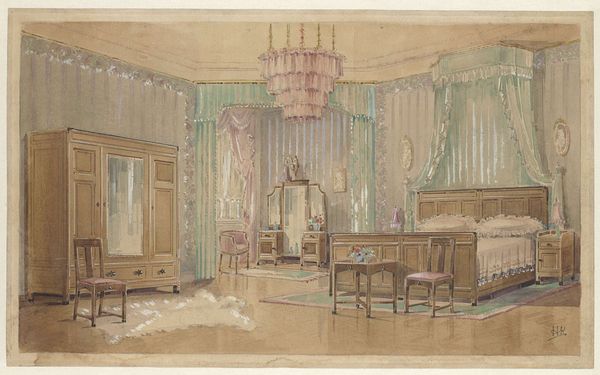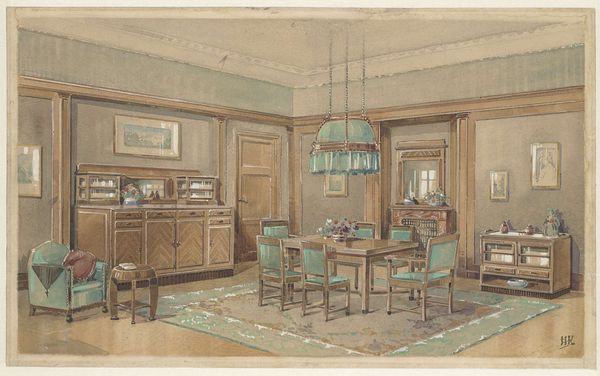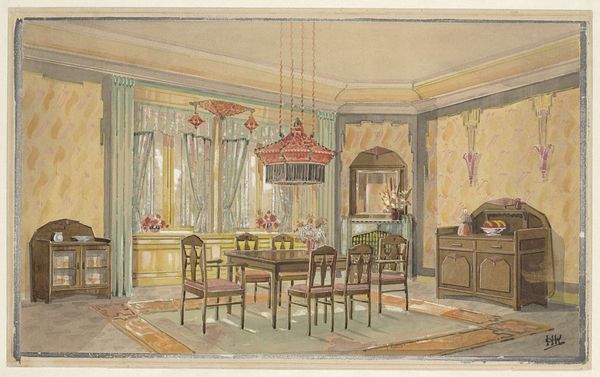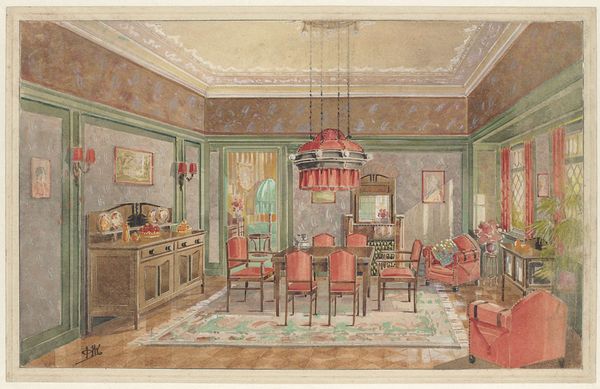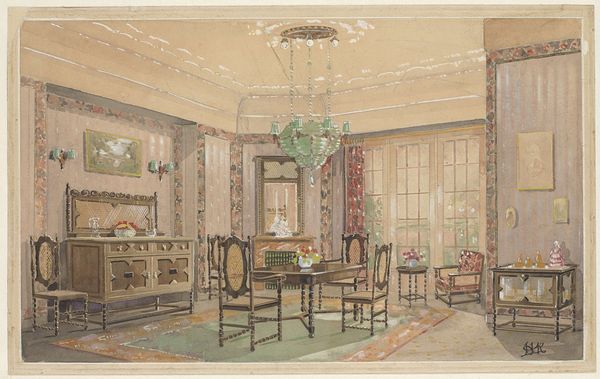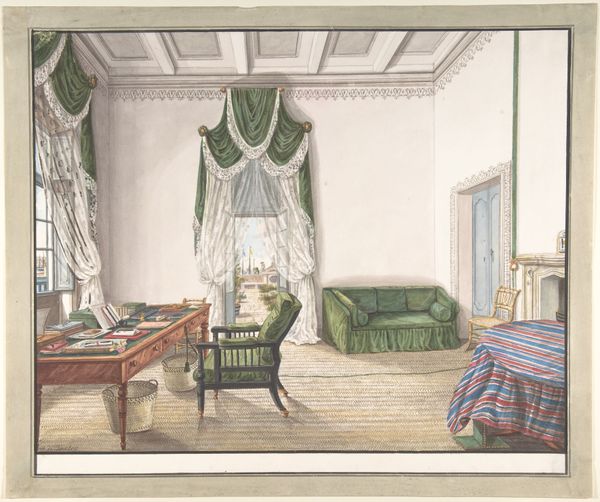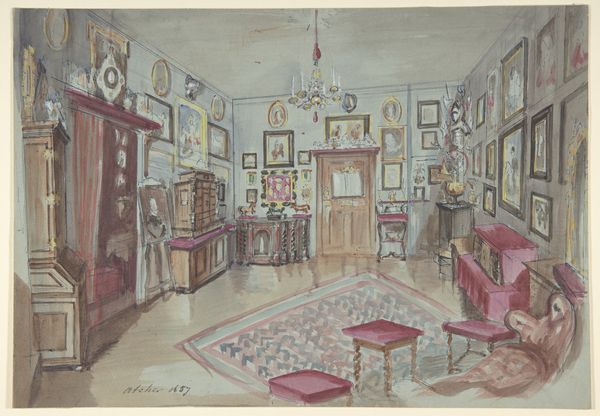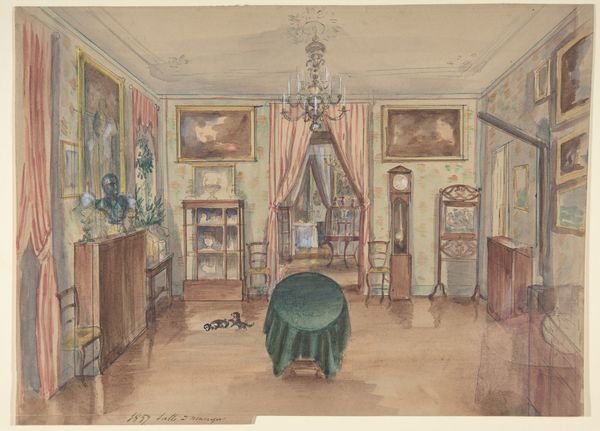
drawing, paper, ink
#
art-deco
#
drawing
#
paper
#
ink
#
genre-painting
Dimensions: height 266 mm, width 444 mm
Copyright: Rijks Museum: Open Domain
Curator: Well, here's a charming rendering of a bedroom, dating back to around 1925. It’s attributed to a Monogrammist HK from the Netherlands and it goes by the name "Slaapkamer met lichtkroontje in bedhemel," or "Bedroom with a Small Chandelier in a Canopy Bed." It’s an ink and wash drawing on paper and presently resides here at the Rijksmuseum. Editor: Immediately, I notice the delicate light. Everything is bathed in this gentle, almost ethereal glow. There's a certain aspirational quality to it, almost like an advertisement. It’s so orderly. Curator: Absolutely, and I see those touches echoed in the art deco styling of the furnishings. There’s an elegance and restraint to it. Considering the socio-economic currents of the time, this represents a clear ideal of bourgeois domesticity, a promise of comfort and order. Editor: The bed is the obvious focal point. A canopied bed has always suggested luxury, hasn’t it? But in this piece, it also functions as a kind of stage. What symbols are woven into this presentation? Is it intended to reflect something beyond the aesthetic? Curator: Precisely! The light fixture suspended above – almost crown-like. Think of the bed not just as a place of rest but also as a symbolic locus of power, family, and perhaps even dreams. The intimate sphere is imbued with greater significance here. Notice how meticulously rendered the shadows and light effects are, underscoring the aspirational design, subtly elevating daily life into the realm of art. Editor: So, do you feel that its artistic significance rests primarily within its representation of domestic space, mirroring social constructs and design ideals? Or does it speak to more personal narratives? Curator: I think it operates on both levels, speaking to the shared desires and anxieties of the time while simultaneously suggesting an almost utopian vision of private life, the perfectly curated space within which a certain class might strive to live. And it presents a striking aesthetic for us to study as social commentators, many years later. Editor: I'm glad we have the context of the period, with the promise of modernism but the reliance of classic status symbols. It reveals an inherent dichotomy. Curator: Yes, and that friction, I think, is where much of its power resides. A simple bedroom rendering reveals such layers when we dig deeper.
Comments
No comments
Be the first to comment and join the conversation on the ultimate creative platform.
